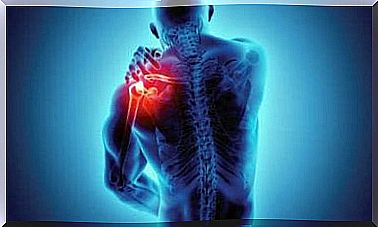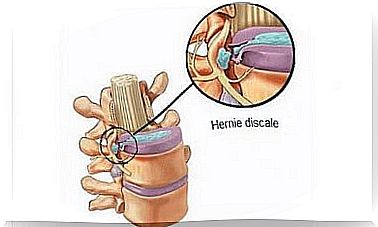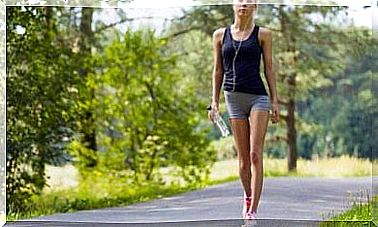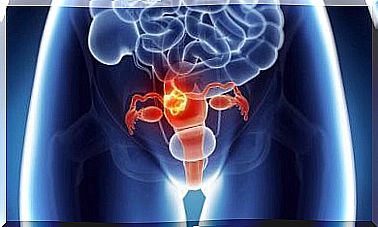What Are The Symptoms Of Gastroenteritis?
Gastroenteritis is a pathology characterized by the appearance of nausea, diarrhea and abdominal pain. It can be caused by a virus, bacteria, parasites or non-infectious agents.

Symptoms of gastroenteritis are characterized by inflammation produced in the gastrointestinal tract. Diarrhea, vomiting, abdominal pain, and muscle cramps are common.
According to publications in The New Journal of Medicine , the most common cause of this pathology (90% of outbreaks in adults) are noroviruses, RNA pathogens of the Caliciviridae family .
Despite what one might suspect, most outbreaks of gastroenteritis are caused by viruses, not bacteria. It is therefore necessary to know the symptoms of the disease in order to approach it with the most effective treatment.
The lethality of gastroenteritis
Various epidemiological studies estimate that there are between three and five billion cases of gastroenteritis per year in the world. Of course, this figure is not negligible.
The World Health Organization warns that the effects are much more severe in children under five.
Here is some data:
- Diarrheal diseases are the second leading cause of death in children under five. This translates into 525,000 deaths per year.
- Some studies say that at least 453,000 of these child deaths are due to rotavirus (22% of deaths in such countries as Ethiopia and India).
- A significant proportion of these deaths could be prevented with access to safe drinking water and adequate sanitation in public facilities.
- Globally, there are approximately 1.7 billion cases of diarrheal disease in infants each year.
As we have seen, the viral agents that are the most common causes of gastroenteritis in adults are noroviruses. While in children under five, it is more often rotaviruses. If you want to know the differences between gastroenteritis symptoms based on the causative agent, read on.

What are the symptoms of gastroenteritis?
The answer to this question largely depends on the causative agent of the disease. Sources like the National Library of Medicine of the United States point out that there are three main pathogenic vehicles: viruses, bacteria and parasites. Here are the symptoms of each of them.
Viral gastroenteritis
According to clinical studies, viral gastroenteritis (also called stomach flu ) caused by rotavirus is usually asymptomatic in adults, with an incubation period of one to three days. In clinically manifested cases, they last between five and seven days.
Here are some of the symptoms regardless of the virus in question:
- Watery diarrhea without blood.
- Abdominal pain and cramps.
- Nausea and vomiting.
- Headache.
- Mild fever, between 37 and 38 degrees.
It is also important to know when to see a doctor. Indeed, although these diseases do not require clinical interventions, they are sometimes necessary in susceptible subjects.
For example, in both children and adults, the presence of blood in vomiting and diarrhea or the inability to retain fluids for 24 hours are symptoms that require urgent treatment.
Bacterial gastroenteritis
In this case, scientific studies claim that bacteria of the genus Campylobacter are the most common causative agents of bacterial gastroenteritis. Half of these are due to exposure to contaminated poultry meat. Other bacteria which manifest this clinical setting are also Escherichia coli , Salmonella and Shigella .
The Veterans Health Library in the United States collects general symptoms of this type of infection. Here are some of the most common signs:
- Watery diarrhea
- Nausea and vomiting
- Fever and chills
- Abdominal pain
- Blood in the stool in the most severe cases
Therefore, the differences between viral gastroenteritis and bacterial gastroenteritis are minimal. Fever and blood in the stool are more common symptoms of bacterial gastroenteritis.
Of course, the gradual worsening, the sustained increase in fever beyond 38 degrees, the presence of blood in the stools as well as the symptoms of dehydration (dry mouth and absence of urine) are obvious signs that medical intervention is necessary.
Symptoms of parasitic gastroenteritis
We are now entering a very broad area as parasites, from protozoa to tapeworms, nematodes and other tapeworms, can cause general frames of gastroenteritis in children and adults. Some research indicates that the symptoms of this type of gastroenteritis are similar to those mentioned above. However, new signs may also appear:
- Anorexia and weight loss.
- Anemia.
- Vitamin deficiencies.
This is because in many cases (such as tapeworm infection), the parasite continually feeds on the patient’s intestinal contents or blood. On the other hand, this type of disease is generally more durable over time. For example, tapeworms can last two or three years without treatment.
Symptoms of non-infectious gastroenteritis
It should be noted that not all episodes of gastroenteritis are due to infectious agents. Here are some situations that cause this general symptom:
- Gluten consumption for celiac patients.
- Crohn’s disease. That is, the inflammation of certain segments of the gastrointestinal tract.
- Poisoning by toxins in food.
- Inflammatory bowel disease ( EII ).

Symptoms of gastroenteritis: what to remember?
Although this pathology shares many obvious signs despite its diverse nature, it is necessary to obtain a medical diagnosis in all severe cases in order to apply the most effective treatment for each patient. In general, the presence of dehydration in the body or of blood in the stools are sufficient warning signals to go to the doctor urgently.
Finally, the most common symptoms of gastroenteritis are obviously diarrhea, abdominal pain and nausea, regardless of the causative agent. But there would also be very marked variations depending on whether the person responsible for the disease is a bacterium, a virus or a parasite.









